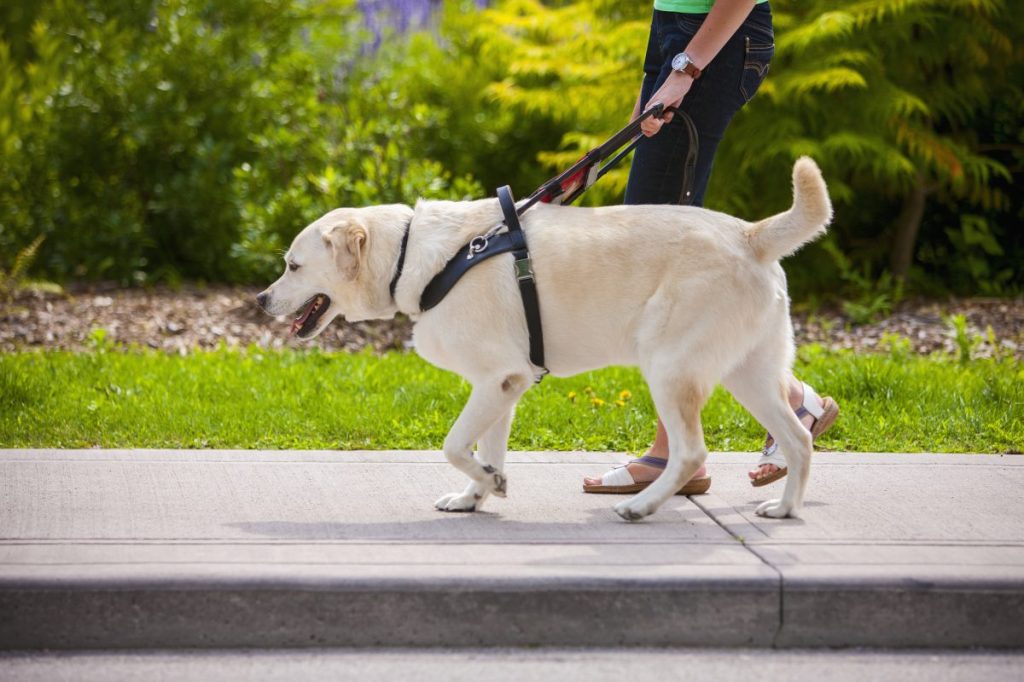Artist Emilie Gossiaux, who lost her vision, has formed a deep connection with her guide dog, London. This week, Gossiaux unveiled a solo exhibition at the Queens Museum in New York that prominently features her English Labrador Retriever, as per Smithsonian Magazine. The show — named “Other-Worlding” — honors their mutual reliance on one another.
Gossiaux was studying art at the Cooper Union in 2010 when she survived a terrible accident. While cycling in Brooklyn, she was struck by an 18-wheeler truck. The collision caused a traumatic brain injury, stroke, and multiple fractures, eventually resulting in her losing her sight, reported Hilarie M. Sheets of the New York Times.
Gossiaux, who is now 34, had to alter her perception of what being an artist meant. A lifetime lover of art, she began to paint and sketch as a child. After the incident, she found ways to adapt to her new reality and taught herself how to produce art relying solely on her tactile sense, instead of the visual one. She shares, “I’m using one hand to ‘see,’ the other hand to carve or draw or manipulate.”
Gossiaux’s artistic journey with her guide dog
During her recovery from the accident, Gossiaux crossed paths with London. They have since been together for a decade. “Since London and I first met, I have begun to understand the animal world more,” she said. “Understanding how to communicate with a dog and get in the mind of a dog has taught me a lot about empathy—instead of getting frustrated, I empathize.”
The highlight of Gossiaux’s exhibit is a 15-foot maypole that is crafted to resemble a large-scale white cane. The pole is not adorned with traditional ribbons but with leashes. Dancing around the pole are three life-size papier-mâché sculptures of “dog-women,” each holding a leash.
The Queens Museum, on its exhibition page, explains that the artist intends to honor the white cane — often associated with visual impairment — by enlarging it in a show of respect. This upscaled representation seeks to highlight its significance in granting autonomy and independence to its users and to increase public consciousness about it.
Gossiaux shared her views with ArtReview saying, “There’s something about an animal walking upright, to me, that is very significant.” She continued, “I talk about hierarchies in relationships between animals and humans, and breaking down that hierarchy or at least blurring it, so that the animals and humans are both walking upright.”
London, the Lab, has been a key character in Gossiaux’s artwork. She frequently creates pieces depicting the dog in dance-like motions. “It’s about London having that movement, that action, of dancing and being so free,” Gossiaux explains. “That’s also how I think about dancing personally: I love dancing. That freedom of movement is really significant to me.”
“Other-Worlding” will be on display at the Queens Museum in New York City till April 7, 2024.









